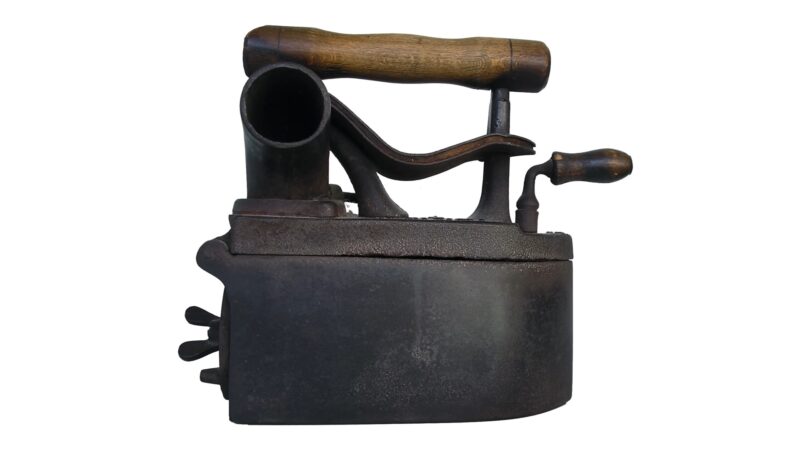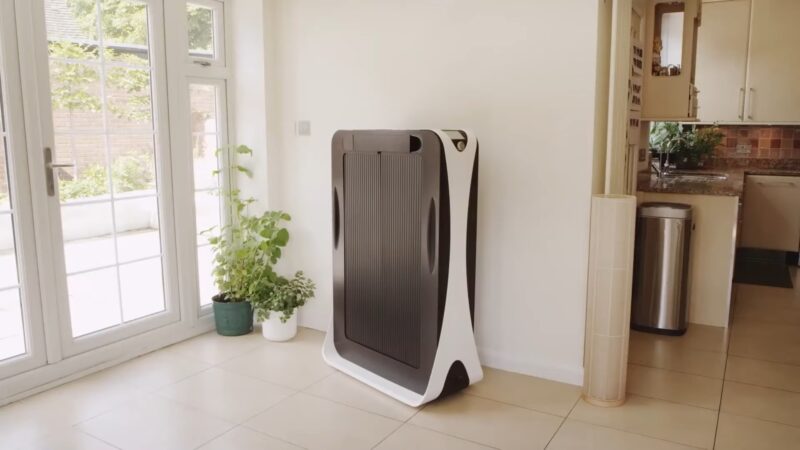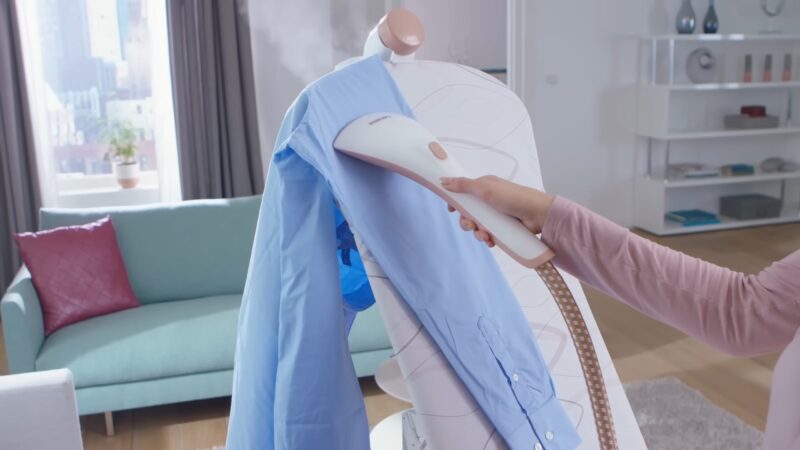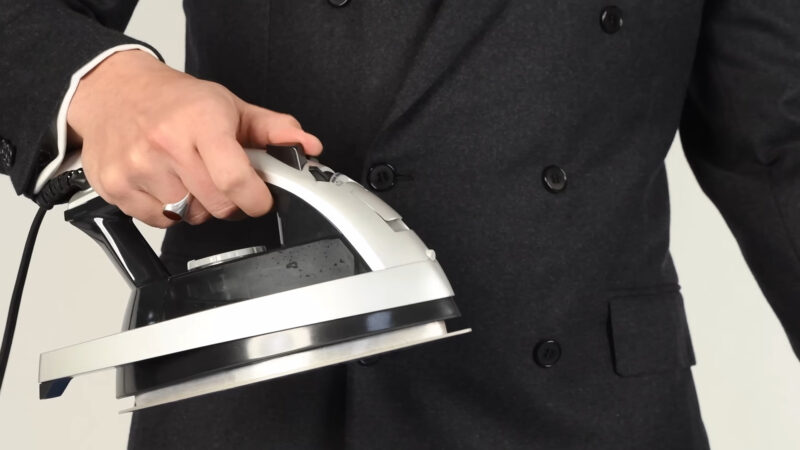Ironing is an essential household chore that ensures our clothes look neat and presentable. Over the years, the humble iron has evolved, offering various types and features to cater to different needs. In this article, we’ll get into the world of irons, exploring their types and what makes each one unique.
Whether you’re a professional in the textile industry or someone looking for the perfect iron for home use, this guide will provide valuable insights.
Traditional Irons

Traditional irons, often referred to as hand irons, are the most common type found in households. They are straightforward in design, with the steam boiler located directly on the iron.
Traditional irons have been around for ages and are the go-to choice for many due to their simplicity and effectiveness. They are directly connected to the electrical outlet, and their design is such that the steam boiler is integrated into the iron itself.
Features and Benefits
- Simplicity: Traditional irons are easy to use, with minimal settings to adjust.
- Portability: Their compact design makes them easy to store and transport.
- Affordability: Generally, traditional irons are more affordable than their advanced counterparts.
Steam Generator Irons
Steam generator irons are a step up from traditional irons, offering a separate steam tank for enhanced ironing capabilities.
These irons are designed with a separate steam tank, allowing them to produce faster and more pressurized steam. This feature is especially beneficial for ironing stubborn creases and thicker fabrics.
Features and Benefits
- Powerful Steam Output: The separate steam tank ensures a consistent and powerful steam output.
- Efficiency: These irons make the ironing process faster, especially for larger batches of clothes.
- Versatility: Suitable for both household and professional use, thanks to their enhanced features.
Mini Irons
Mini irons are compact and portable, making them perfect for travelers or those with limited storage space.
As the name suggests, mini irons are smaller in size compared to traditional and steam irons. They come in two variants: those without an external steam boiler, ideal for travel, and those with steam generators, used in industrial areas for ironing smaller items.
Features and Benefits
- Compact Design: Their small size makes them easy to pack and carry.
- Quick Heat-Up: Mini irons typically heat up faster due to their smaller size.
- Specialized Use: Mini irons with steam generators are perfect for ironing intricate items in industrial settings.
Automatic Irons

Automatic irons are designed for industrial use, aiming to iron a large number of clothes efficiently.
These are large machines used predominantly in textile factories. Their primary purpose is to iron vast quantities of clothes in a short span, ensuring consistency and quality.
Features and Benefits
- High Capacity: Can handle large batches of clothes simultaneously.
- Consistency: Provides uniform ironing results across all garments.
- Time-Efficient: Reduces the time taken to iron large quantities significantly.
Hanging Irons

Hanging irons offer a unique design where the iron is suspended, allowing for vertical ironing.
Also known as mounted irons, these are suspended in the air, eliminating the need for an ironing board. They usually come with a vertical hanger to hang the iron and the garment being ironed.
Features and Benefits
- Space-Saving: No need for an ironing board, making it ideal for smaller spaces.
- Versatility: This can be used for both vertical steaming and traditional ironing.
- Ease of Use: The suspended design makes it easier to iron larger items like curtains and bed linens.
What to Look for When Choosing an Iron
Selecting the right iron is crucial to ensure efficiency and longevity. With so many options available, it can be overwhelming to decide which one is the best fit for your needs. Here, we’ll guide you through the essential factors to consider when making your choice.
Choosing an iron isn’t just about picking the one that looks the most stylish or has the most features. It’s about finding the one that aligns with your ironing habits, the types of fabrics you frequently deal with, and your budget.
Key Considerations
- Type of Iron: Decide between a steam generator or a classic based on your requirements. Steam irons are ideal for industrial areas and large households, while classic irons are suitable for regular home use.
- Descaling System: To prolong the life of your iron, ensure it has a descaling system to protect it from limescale.
- Power: The wattage indicates the iron’s power. A higher wattage means the iron heats up faster and provides a more consistent temperature.
- Soleplate Material: The material of the soleplate affects how smoothly the iron glides over fabrics. Look for non-stick or ceramic soleplates for the best results.
The Evolution
Irons have come a long way from the simple metal plates heated over a fire. With advancements in technology, irons have become more sophisticated, offering a range of features to make the ironing process more efficient and enjoyable.
From the rudimentary designs of the past to the high-tech models of today, the journey of irons is a testament to human ingenuity and the relentless pursuit of convenience.
Milestones in Ironing History
- Charcoal Irons: Before electricity, irons were filled with hot coals to provide the necessary heat.
- Electric Irons: The introduction of electricity brought about the first electric irons in the early 20th century.
- Steam Irons: These became popular in the mid-20th century, using water to produce steam and make ironing easier.
- Cordless Irons: Modern innovations led to the development of cordless irons, offering greater mobility and convenience.
Frequently Asked Questions (FAQs)
How often should I clean my iron?
It’s recommended to clean your iron every couple of months, or when you notice residue build-up on the soleplate. If you use starch or other products, you might need to clean it more frequently.
Can I use tap water in my steam iron?
While many modern irons are designed to handle tap water, using distilled or de-mineralized water can help prevent mineral build-up and prolong the life of your iron.
Why is my iron leaking?
Leaking can occur if the iron is overfilled, not heated adequately, or if there’s a malfunction. Always ensure you fill to the recommended level and allow the iron to heat up fully before use.
What is the lifespan of a typical iron?
With proper care and maintenance, a good quality iron can last anywhere from 5 to 10 years.
Are cordless irons as effective as corded ones?
Cordless irons offer the advantage of mobility, but they might not retain heat as long as corded models. They’re ideal for quick touch-ups or smaller ironing tasks.
Final Words
Ironing, though often seen as a mundane task, holds a rich history of innovation and evolution. From the basic hand irons of yesteryears to the high-tech models of today, the journey of irons reflects our constant pursuit of convenience and efficiency.
As you select the perfect iron for your needs, remember to consider its environmental impact and strive for sustainable practices. Happy ironing!
